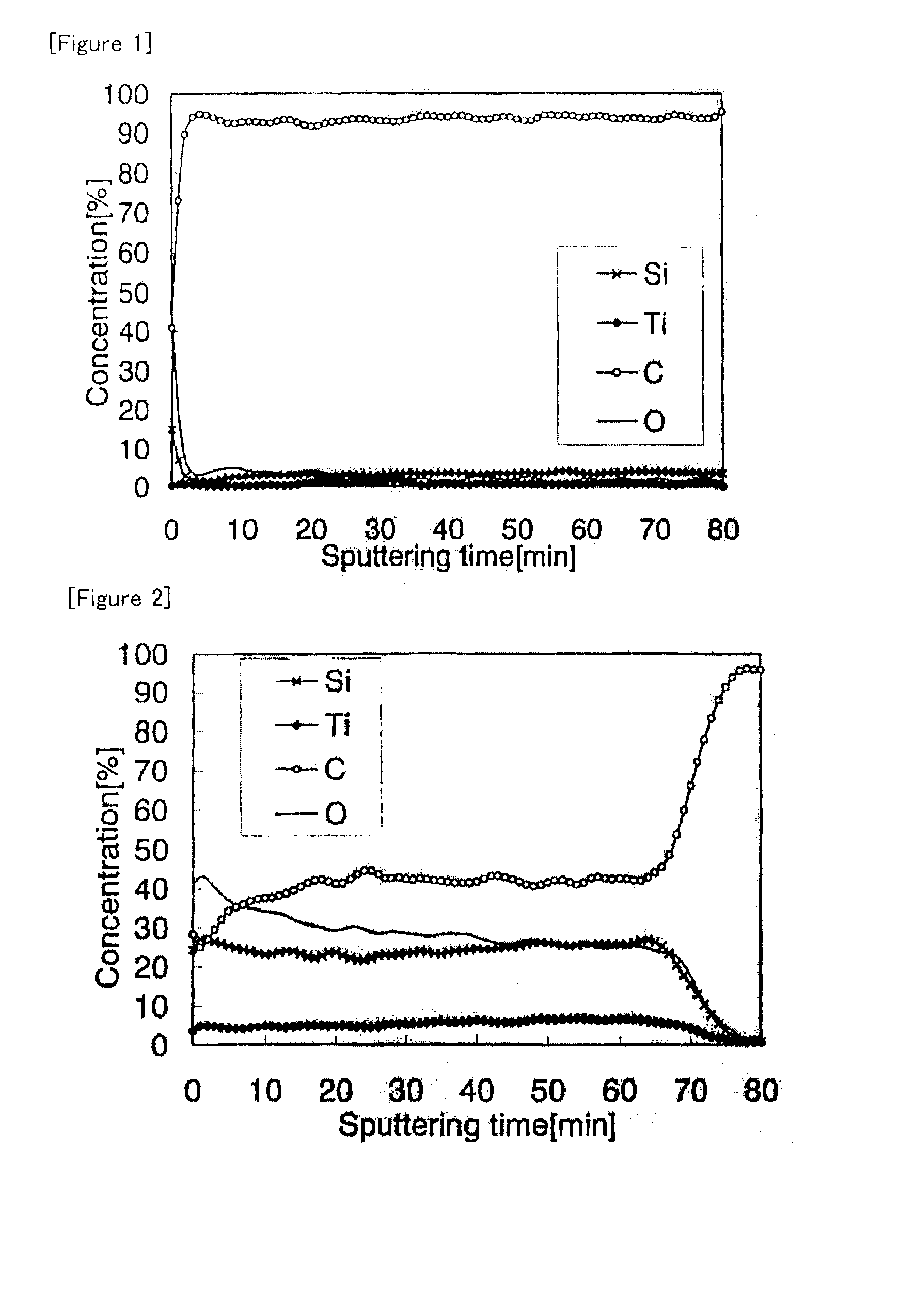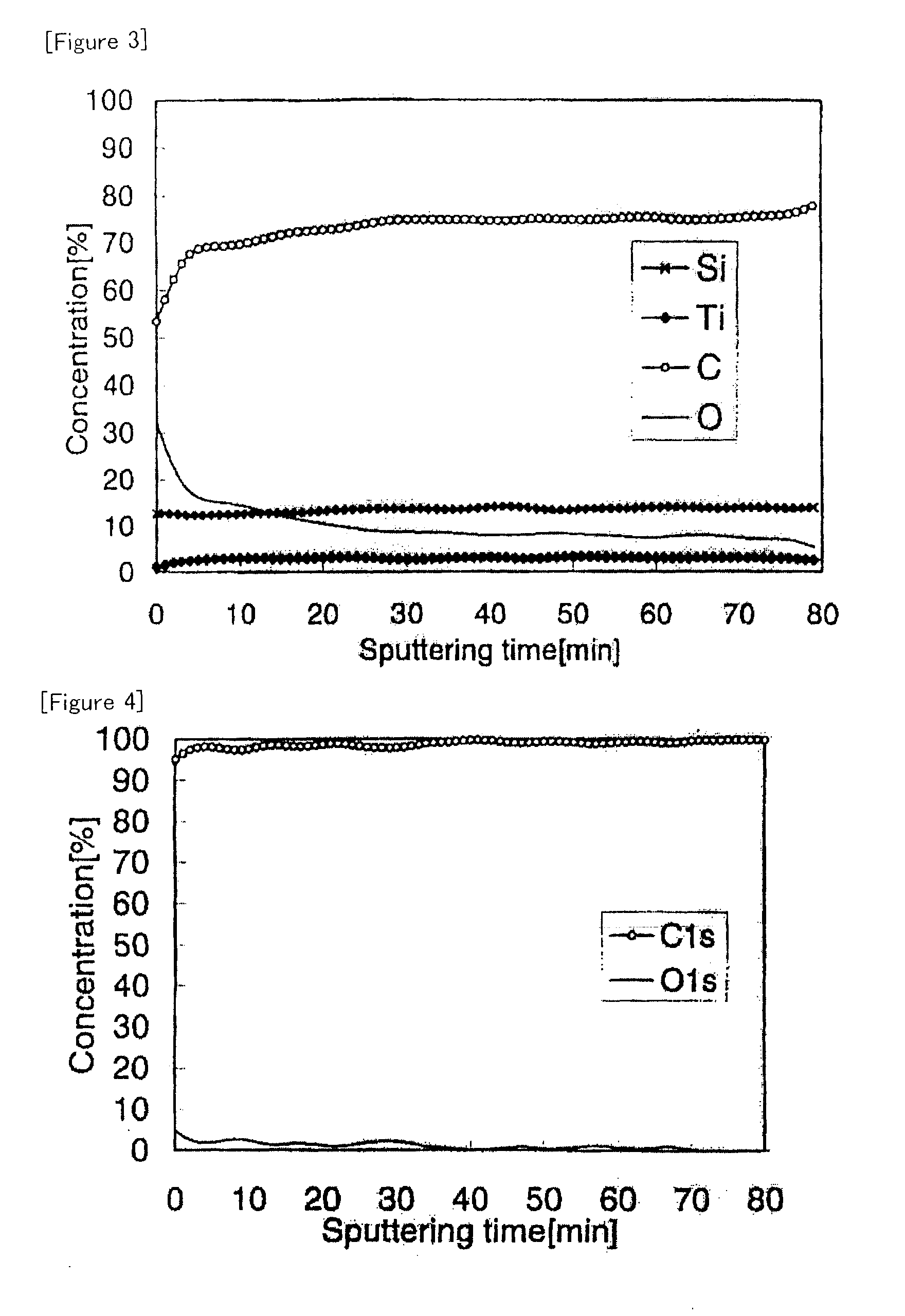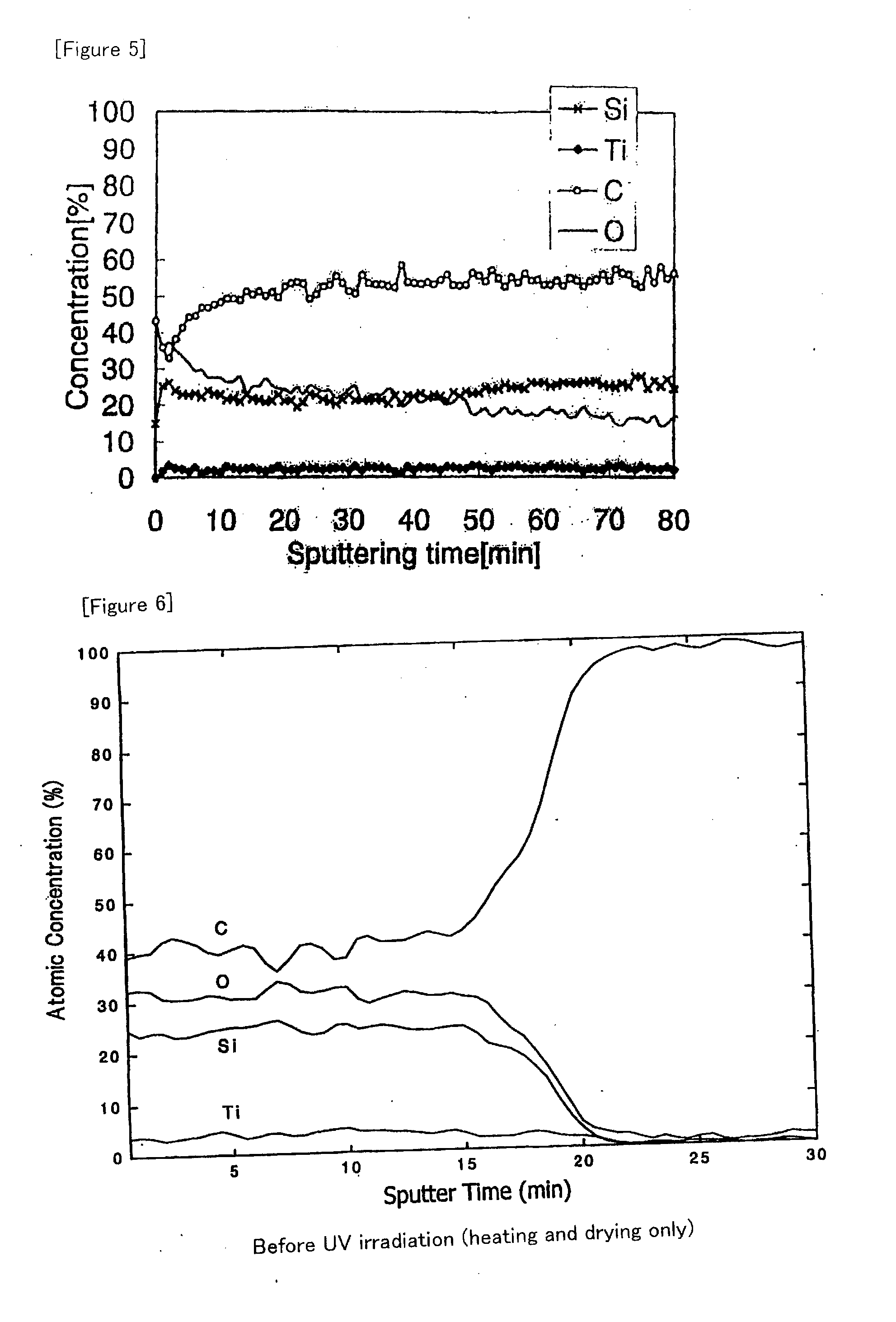Organic-inorganic composite body
- Summary
- Abstract
- Description
- Claims
- Application Information
AI Technical Summary
Benefits of technology
Problems solved by technology
Method used
Image
Examples
examples
[0137]The present invention will be described below in more detail by referring to Examples, but the technical scope of the present invention is not limited to these exemplifications.
example a
Preparation of an Organic-Inorganic Composite Body-Forming Composition
example 1
1. Photosensitive Compound
[0138]30.3 g of diisopropoxybis(acetylacetonato)titanium (T-50, Nippon Soda Co., Ltd.; solid content in terms of titanium oxide, 16.5% by weight) was dissolved in 58.4 g of a mixed solvent having a 60:20:20 ratio of ethanol / ethyl acetate / 2-butanol, into which 11.3 g (10 times the mole of titanium oxide) of ion-exchange water was then dropped slowly under stirring for hydrolysis. After 1 day, the hydrolyzed solution was filtered to obtain a yellow, transparent nano-dispersion of titanium oxide, [A-1], having a concentration of 5% by weight in terms of titanium oxide. The titanium oxide had an average particle size of 4.1 nm and was monodisperse.
2. Organosilicon Compound
[0139]Vinyltrimethoxysilane, [B-1], (KBM-1003, Shin-Etsu Chemical Co., Ltd.) was used as the organosilicon compound.
3. Mixed Solution (Photosensitive Compound+Condensate of the Hydrolysate of a Silane Compound)
[0140]The mixed solution [C-1], of the above [A-1] and [B-1] was prepared so that th...
PUM
| Property | Measurement | Unit |
|---|---|---|
| Length | aaaaa | aaaaa |
| Fraction | aaaaa | aaaaa |
| Percent by mass | aaaaa | aaaaa |
Abstract
Description
Claims
Application Information
 Login to View More
Login to View More - R&D
- Intellectual Property
- Life Sciences
- Materials
- Tech Scout
- Unparalleled Data Quality
- Higher Quality Content
- 60% Fewer Hallucinations
Browse by: Latest US Patents, China's latest patents, Technical Efficacy Thesaurus, Application Domain, Technology Topic, Popular Technical Reports.
© 2025 PatSnap. All rights reserved.Legal|Privacy policy|Modern Slavery Act Transparency Statement|Sitemap|About US| Contact US: help@patsnap.com



